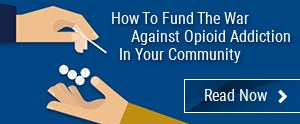Distracted driving: A growing and hard-to-track problem
This article looks at how prevalent distracted driving has become across the country and why it’s hard to track.
As anybody who has spent any amount of time in recent years knows, distracted drivers – especially drivers distracted by smartphones – are an all too common problem. It was therefore somewhat surprising that when the National Highway Traffic Safety Administration (NHTSA) released its latest report on fatal motor vehicle accidents in the United States, the data showed that fatal distracted driving crashes actually went down, despite overall traffic fatalities rising dramatically. While it would be nice to believe that distracted driving is finally becoming less of a problem, the data likely highlights how difficult it is to track distracted driving accidents in the first place.
How prevalent is distracted driving?
Tackling the question of how widespread distracted driving has become is harder than it may at first appear. For one, many drivers who were distracted just prior to a crash will not admit to the fact over fears of legal repercussions. In other cases, even when it is clear that the accident was caused by somebody on their phone, the official cause may be listed as something else.
Half of all accidents in the NHTSA’s report, for example, occurred because the driver veered out of their lane or roadway despite traffic and weather conditions being good. Those types of accidents are often the result of distracted drivers focusing too much on their smartphones rather than on the road, but they are rarely listed as such in the data. In fact, the National Safety Council analyzed NHTSA traffic accident data and found that cellphone use was cited as a cause in only about half of the cases where it was clearly a factor.
Another problem is with crash reports themselves. The NHTSA relies on police crash reports to determine the causes of accidents, but the quality of those reports vary greatly from one state to the next. Tennessee, for example, is widely recognized as having one of the most thorough crash report forms in the country, which allows police to distinguish between distracted driving in general and cellphone usage as causes of accidents. As a result, as Bloomberg points out, despite having just two percent of the country’s population, in NHTSA data Tennessee officially accounts for 19 percent of all phone-related traffic deaths in the country.
Why problems with the data matter
Officially, NHTSA data shows that cellphone usage accounted for just 1.4 percent of traffic deaths in the U.S. in 2016, but as the problems identified above show, that figure drastically underestimates the problem. Not having reliable federal data is a significant issue since that data is used to determine a host of traffic safety initiatives. For example, if NHTSA data shows that cellphone usage behind the wheel isn’t a widespread problem, then safety campaigns and programs designed to tackle distracted driving are less likely to receive the federal funding they otherwise deserve.
Hurt in an accident?
A motor vehicle accident can be a devastating experience that may require months and even years of recovery time. Medical bills, lost income, physiotherapy, and property repairs can quickly add up. That’s why anybody hurt in an accident should contact a personal injury attorney right away. An attorney can help clients make sense of the compensation they may be entitled to and advise them on how to go about making an effective claim.


